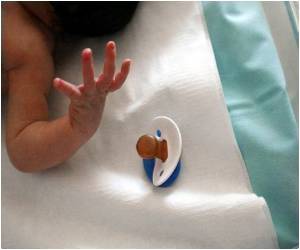A team of Rice University seniors have developed a device that could save babies' lives.

Rice's global health team recognized the need for a portable device for infants that can be taken to countries lacking resources for medical equipment.
"Our device is not a replacement for a ventilator – it's a respiratory support device," said Heather Machen, an attending physician in the emergency center and assistant professor of pediatrics at Texas Children's Hospital, who advised the students. "Unlike a ventilator, a patient must be able to breathe on his or her own. With the use of CPAP, many children will be able to recover without a ventilator."
The Baby Bubbler has two main components, said Michael Pandya, a Lubbock, Texas, native who developed it with four other seniors.
One component, a flow generator, pumps air through a tube and allows clinicians to add oxygen if needed. The tube goes from the generator to the infant, who breathes through nasal prongs, and then to the second component, a water bottle that serves as a regulator. "The pressure level to the patient can be changed by adjusting the depth of water in the bottle," Pandya said.
An alarm to detect backflow of water into the line warns doctors if the circuit loses pressure. "It's a simple design, but it's incredibly important in developing countries where the nurse-to-patient ratio is sometimes one nurse for 40 or so patients," he said.
Advertisement
Source-Eurekalert









